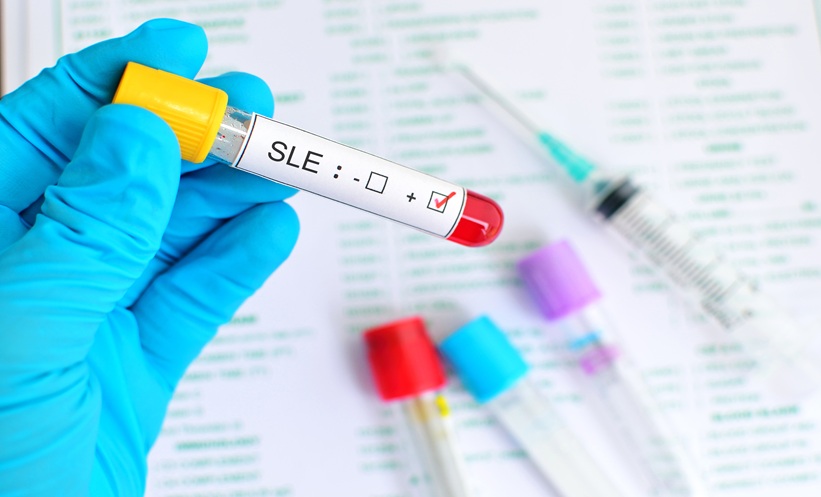Abstract
Autoimmune responses need to be identified and managed promptly to avoid deleterious consequences. Autoimmune diseases, such as rheumatoid arthritis (RA), are debilitating and can lead to a compromised quality of life for patients. Autoimmune disease severity is directly related to sex (females are more prone to the diseases), as well as age, the environment, and genetic factors. Though many of these triggers cannot be avoided, disease onset and progression can be delayed, managed, and to some extent avoided altogether by dietary interventions. Certain food and dietary components have been observed to have anti-inflammatory properties and can thus be included in a patient’s diet to reduce disease symptoms. This review will assess dietary components with regard to RA, including those that are frequently observed to be different in patients with RA in comparison to healthy individuals. The authors conclude that assessment of the nutritional status of a patient, including the deficiency of vitamins or other nutrients and energy requirements, should be recorded and a dietary regimen should be designed accordingly for a better therapeutic response.
INTRODUCTION
Rheumatoid arthritis (RA) is an inflammatory, chronic, autoimmune disease leading to systemic inflammation and joint damage, making the patient compromised and dependent.1 Prolonged pharmacological treatments often maintain patients in remission, reducing pain and joint damage;2 however, continuous use of these drugs causes various side effects, including intestinal disorders, reduced calorie intake, and increased nutrient deficiency,3 altering the nutritional profile of patients due to changes in ingestion, digestion, absorption, and excretion of food.4 Such changes to a patient’s nutritional profile are also observed during the natural course of RA;3 therefore, it is important to supplement patients with nutrients and other dietary components to protect them from disease worsening.3
RA is known to be linked to genetic and environmental factors,5 as well as nutritional imbalances.6,7 Therefore, all of these factors must be considered for management of the disease, as well as when designing effective therapeutic regimens. In a previous review,7 the authors discussed various diets and food components that can help keep RA patients in remission, highlighting the need for an alternative pharmacological treatment to control the progression of disease.
Along with attention to diet and dietary compounds, the medical community needs to focus on various vitamins and minerals that are limited in patients with RA and understand their role in maintaining health. Meeting nutritional requirements using certain diets helps to lower pain and inflammation, inhibit the progression of disease, and boost the immune system. External supplementation of nutrients is one of the conventional approaches to meeting the nutritional requirements of the body, but this approach has been overcome by growing interest towards natural resources, such as food and dietary interventions. Based on the levels of nutritional deficiency, a dietician can suggest whether to administer external supplementation or to continue with natural resources. External supplementations are concentrated extracts and, in cases of severe deficiency, can be a suitable solution to manage disease, leaving natural resources to help diminish mild-to-moderate deficiencies. However, the nutrient bioavailability from dietary food sources depends on several external factors (food matrix and chemical form of nutrients) and internal or host factors (age, sex, nutritional profile, gastrointestinal effects, adhesion, and uptake by the intestinal mucosa). Depending on nutritional status, habitual diet, and several host factors, diet-based nutritional interventions may differ from patient to patient.
This review will discuss the nutritional statuses of RA patients and highlight the importance of nutritional assessment of these patients during disease progression for the effective treatment of the disease. Several roles and sources of dietary supplements are also summarised that will help clinicians and dieticians, as well as patients, in the effective management of the disease.
NUTRITIONAL INTERVENTION WITH FOOD COMPOUNDS
Alongside conventional disease-modifying antirheumatic drugs, aspirin and nonsteroidal anti-inflammatory drugs have been prescribed for inflammation and pain in RA. These drugs also induce some side effects that can hamper the immune system. For example, methotrexate treatment can lead to mouth sores (stomatitis), and patients taking disease-modifying antirheumatic drugs can experience abdominal pain, loss of appetite, nausea, and a sore tongue.8 Thus, there is a need for medication with curative capabilities and without any side effects.
The potential of dietary intervention has always been a topic of discussion for the effective management of RA,7 and several components have been tested and have proven to limit disease progression.7 Although multiple reports have suggested nutritional imbalances in RA patients, as well as advised consumption of natural supplements, a comprehensive assessment of the nutritional value and bioavailability of supplements, so that they can be prescribed effectively, is lacking. This review will assess the role of different nutrients, minerals, food components, fruits, and vegetables, as well as the energy requirements of RA patients, for effective management of the disease.
Vitamins
Vitamin B6 is often found to be low in RA patients,9 though this is not necessarily due to decreased intake or increased excretion.9 Being inversely correlated with erythrocyte sedimentation rate (ESR), C-reactive protein level, disability score, pain, and morning stiffness in RA,10 vitamin B6 supplementation did not improve RA markers or symptoms,9 indicating deficiency to be a result of the inflammation. Moreover, proinflammatory cytokines (IL-6 and TNF-α) were suppressed with vitamin B6 at high doses.11 Reduced physical activity increases the risk of cardiovascular diseases, which was significantly lowered upon vitamin B supplementation,12 indicating that though vitamin B6 supplementation cannot directly suppress RA, it can effectively reduce risk factors of other opportunistic diseases. Thus, proper vitamin B6 supplementation in RA can help the body to manage the ongoing inflammation and prevent the occurrence of other diseases caused by its deficiency.9
Lower levels of vitamin D have been reported in RA patient blood serum and have a negative association with disease activity,13 wherein its supplementation is known to improve disease activity.14 The vitamin is required by the body for calcium absorption and homeostasis, and a concomitant low calcium level is reported in RA patients.15,16 In addition, vitamin D has an immunoregulatory role, aiding the effective functioning of immune cells;17 therefore, vitamin D deficiency can aggravate RA.
Reactive oxygen species produced by immune cells are a major contributor to inflammation and joint damage in RA patients. Antioxidants protect against tissue damage due to reactive oxygen species by suppressing the production of cytokines and collagenase; RA patients have low levels of antioxidants, including vitamin C and E, β-carotene, zinc, selenium,4 α-tocopherol,15 vitamin A, and reduced activity of superoxide dismutase and glutathione peroxidase (GPx).17 An inverse association has been found between RA disease activity and supplementation of vitamin C, E, β-cryptoxanthin, zinc, copper, manganese, fruits, and cruciferous vegetables,4 suggesting that reduced levels of antioxidants may play a role in the progression of RA.15 Thus, foods that are rich sources of various anti-inflammatory and antioxidant compounds have shown beneficial effects against chronic inflammatory diseases.18
Vitamin E, an important antioxidant, is often significantly decreased in RA patients, suggesting an increased possibility of oxidative damage.17 A murine model of RA, when supplemented with oral vitamin E, did not show an improvement in disease status; however, the supplementation prevented joint destruction and led to significantly reduced IL-1β.19 Patients supplemented with omega-3 and vitamin E showed significant reductions in malondialdehyde levels, but no effect on the activity of antioxidant enzymes or improvements in the clinical outcome of disease were observed.20 Moreover, supplementation with 600 IU of vitamin E on alternate days did not contribute to a reduced risk of RA occurrence.21 Therefore, although no direct effect of vitamin E supplementation on RA activity has been shown, it can protect against oxidative damage.
Minerals
Significant decreases in serum calcium and increases in serum phosphorous levels can lead to altered bone metabolism.22 Reduced calcium levels may be the result of reduced absorption, an altered oxidative metabolism changing the intracellular ionic environment, or a side effect of glucocorticoid treatment, which reduces calcium absorption in the body.23 Increased serum phosphorous is related to tissue hypoxia and increased degradation of ATP, leading to the release of inorganic phosphate into the blood circulation. Any alteration of the calcium:phosphorous ratio in patients will lead to altered bone metabolism;22 therefore, maintaining a healthy level of these minerals in RA patients will help to reduce the disease progression and related damage, although more clinical studies are required. Moreover, supplementation of calcium should be undertaken, keeping in mind the risks, such as cardiovascular disease. Reduced serum or plasma levels of zinc,24 magnesium,25,26 potassium,26 and selenium,27 and increased levels of copper24 and sodium26 are observed in RA patients. Lower zinc and higher copper levels are known to correlate with active disease.24 It was reported that increased IL-1 levels in patients can increase metallothionein levels, which may chelate circulating zinc;28 moreover, zinc-containing proteins accumulate in the liver and in inflamed joints, leading to reduced plasma zinc levels in patients.29 Patients supplemented with zinc sulphate showed improvements in laboratory and clinical parameters for RA.30 Zinc is primarily involved in the efficient functioning of the immune system and is an important part of superoxide dismutase.30 Zinc also inhibits the NF-κB pathway and decreases proinflammatory cytokine production,17 as well as having a bone-forming effect and reducing osteoclast activity.17 Thus, zinc deficiency may play an essential role in the inflammatory process of RA.
Increased levels of copper are present in the serum and hair of patients with RA, but the levels are significantly decreased in the erythrocytes.31 Patients living in areas with high copper-containing farm soil have increased white blood cell counts, ESR, and Disease Activity Score 28 values, and blood levels of nickel and copper correlate positively with ESR.32 Copper levels rise due to increased synthesis of ceruloplasmin by the liver,29 and serum ceruloplasmin levels are also positively correlated with ESR.31 In addition, serum magnesium and potassium levels decrease and negatively correlate with disease activity in RA patients,25 while serum sodium levels are increased.25 However, there is limited experimental and clinical knowledge regarding sodium, potassium, and magnesium levels in relation to RA.
GPx activity is significantly reduced in RA patients and is controlled by levels of selenium. GPx controls intracellular reactive oxygen species levels by inhibiting the NF-κB pathway, leading to the production of inflammatory cytokines. Selenium levels are often low in RA patients and correlate negatively with disease activity;33 a lack of selenium leads to reduced GPx activity, which may play a role in increasing inflammation and progression of RA. Selenium supplementation has been shown to increase blood selenium concentration, with subsequent increases in GPx activity in the serum and red blood cells, although selenium and GPx concentrations remained unchanged in polymorphonuclear cells, which might have resulted in a lack of clinical response in RA patients upon selenium supplementation.34
Iron is required by immune cells to function. Excessively elevated levels of iron can cause oxidative stress and increase the risk of infection, while altered iron homeostasis plays a role in autoimmune diseases, immune system dysregulation, and gout.35 Significantly decreased serum iron concentration, total iron binding capacity, and haemoglobin levels are observed in RA patients,36 and lower haemoglobin levels are related to greater disease activity.37 Proinflammatory cytokines are known to affect iron metabolism, causing iron deficiency and anaemia in patients.38 Anaemia of chronic disease (ACD) is the body’s protective mechanism to reduce the available amount of free iron by converting it into ferritin during the course of inflammation or infection, thus leading to a decline in haemoglobin levels. On the other hand, a disease that causes blood loss can lead to the development of iron deficiency anaemia (IDA); thus, oral iron supplementation will be beneficial for patients with IDA but harmful for patients with ACD.39 A higher number of RA patients have ACD compared to IDA, and ACD patients have a more severe disease with reduced recovery from anaemia upon iron supplementation when compared to IDA patients.40 The type of anaemia a patient has must be carefully studied and then the deficiency supplemented to prevent disease worsening.
Calories
Contrary to the old adage ‘if a little is good, more is better’, it is important to assess the energy needs of RA patients compared to a healthy person to prevent obesity or becoming overweight. Differences in energy needs can be simply attributed to subtle differences in metabolism between RA patients and healthy people. Studies have reported that increased energy uptake leads to changes in disease activity.41 It has been shown that resting energy expenditure in RA patients is 1% higher than in controls, but when fat-free mass is considered, the resting energy expenditure increases to 62 kcal/kg in RA patients, while for controls it is limited to up to 46 kcal/kg.41 In addition, physical activity expenditure has been found to be 250 kcal lower in women with RA when compared with healthy controls. Since elevation in resting energy expenditure can be attributed to hypermetabolism, it may affect the total energy expenditure.42,43 Therefore, an increase in energy uptake should not be advised for RA patients because it may lead to fat accumulation, resulting in obesity and hindering routine activities.42,44 To minimise infection risk and maintain health, it is essential to preserve the fat-free mass, which can be achieved with the help of diet, exercise, and pharmacological interventions.43
Protein
The dietary reference intake suggests consuming approximately 1.0–1.6 g/kg of body weight of protein to prevent the loss of muscle mass.45 Since there are no reports advising optimal protein intake for RA patients, dieticians can recommend optimal uptake for individual patients depending on their nutritional requirements.43 No significant association between protein uptake and RA has been reported.46
Fats
Monounsaturated fats, like omega-3 or omega-6 fatty acids, directly benefit RA patients due to their immunosuppressive and anti-inflammatory activities. Consumption of omega-3 fatty acids can adjust the immune response, leading to improvements in symptoms like morning stiffness and tender joints; omega-3 fatty acid consumption is preferable over nonsteroidal anti-inflammatory drugs or corticosteroids.47,48 In addition, omega-6 fatty acid or gamma-linolenic acid intake as part of the patient’s daily diet can decrease tender and swollen joint scores.49 While recommending fat intake to a patient, monitoring the omega-6:omega-3 fatty acid ratio is important, since this ratio is comparatively higher in people who consume a Western diet and is generally considered proinflammatory.50 Fish oils are known to harbour high amounts of omega-3 fatty acids and a daily consumption of approximately 3.6 g of omega-3 fatty acids has been shown to significantly reduce morning stiffness and increase grip strength in RA patients.51 Ethyl ester derivatives of omega-3 fatty acids (e.g., eicosapentaenoic and docosahexaenoic acids) have the ability to reduce the symptoms of RA.52
Consumption of saturated fatty acids leads to a significant increase in biomarkers of inflammation, including C-reactive protein and IL-8; however, no specific recommendation about their intake is available for RA patients.53,54 As a result, dieticians may recommend the standard levels of dietary fats to RA patients, keeping in mind cardiovascular disease and dyslipidaemia in lighter or low BMI patients.55,56 Increased inflammation in RA is associated with significantly reduced levels of triglycerides, high-density lipoprotein cholesterol, and total cholesterol in the serum of patients, as well as significantly high levels of low-density lipoprotein cholesterol.57 Patients with low reserves of fats have reduced vitamin A and E levels, which further increases lipid peroxidation and alters the lipid profile, causing significant muscle depletion and worsening of RA.3
Fruits and Vegetables
Fruits and vegetables are rich in phytochemicals and daily consumption can suppress inflammation and enhance antioxidant activity.7 Polyphenols from dried plums are well known to inhibit TNF-α and nitric oxide synthase, and can stop the activity of transcription factor-nuclear factor for activated T cells.58 Further, anthocyanins from rice and soybeans can reduce the levels of TNF-α and can suppress disease activity,59 while resveratrol, a phytochemical from black grapes, can reduce markers of RA such as serum rheumatoid factor, cartilage oligomeric matrix protein, and matrix metalloproteinase-3; immunoglobulin G; proinflammatory cytokines (like TNF-α), and oxidative stress.60 Mangiferin from mangoes and kaempferols and p-coumaric acid from grapefruits can positively reduce symptoms of RA by inhibiting several inflammatory pathways.7
CONCLUSION
Checking the nutritional status of RA patients is important for maintaining immunity and overall health. RA-related damage is inevitable and is aided by side effects of medication, leading to lower nutrition absorption or increased metabolism, thus reducing the quality of a patient’s nutritional status. This inevitable damage caused by disease, both naturally and because of medications, can be delayed in RA patients by early assessment of nutritional status, helping prevent disease progression. The aforementioned observations suggest that nutrition is an important factor in RA and is involved in the progression and outcome of the disease. Despite the fact that nutrition and its impact on disease progression has received much attention, its role is not emphasised during the training of rheumatologists in medical schools; however, it can be argued that designing and suggesting a nutritional plan is the role of a dietician and not of a rheumatologist, although rheumatologists consult face-to-face with the patients and are often asked about dietary interventions. The authors therefore suggest that clinicians should be trained for basic awareness on the topic to aptly counsel their patients. One specific diet alone cannot provide all the necessary micronutrients, making it impossible to meet the exact nutritional requirements of the body, and therefore regular consumption of a variety of foods in sufficient amounts is of paramount importance to maintain nutritional balance. For example, cereals are the major source of iron and zinc, while fruits and vegetables may serve as the sole provider of vitamin C. Single and short-term interventions may not be sufficient to manage moderate and severe nutritional deficiencies, but a balanced combination of different interventions may be effective. A combination of interventions represents the perfect mix of micronutrients, different whole foods, and a complete diet potent enough to help the body acquire a nutritional equilibrium.
It can be inferred that RA patients must undergo initial body composition status check-ups to prevent harm from factors that can be easily negated. A patient’s nutritional status can be determined using anthropometric (weight, height, tricep and bicep skinfold thickness, BMI, and arm circumference) and biochemical analyses (serum albumin, thyroxine-binding prealbumin, transferrin, folic acid, zinc, and retinol binding protein), as well as dietary intake measurements (food frequency questionnaire).3,6 Strict control of a patient’s nutritional status can be easily achieved by diet, and can help in the management of RA7 and prevent occurrence of other associated diseases.3 The authors thus suggest that the nutritional profile of the patient should be considered during treatment and the patient must be externally supplemented with deficient nutrients to minimise the side effects of medications and maintain wellbeing. Therefore, it is imperative for rheumatologists and dieticians to work in parallel to control the progression of RA by considering both physiological and nutritional requirements of their patients.61








